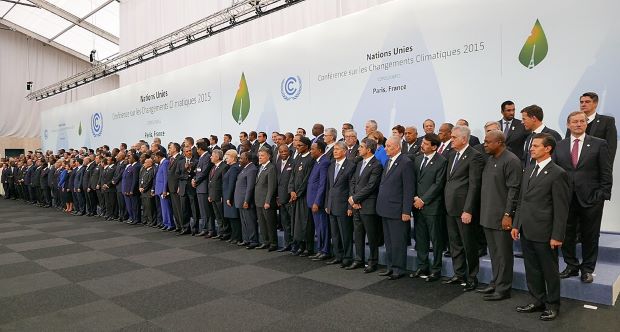December 12 in History
2015 – The Paris Agreement relating to United Nations Framework Convention on Climate Change is adopted
The international treaty on climate change, referred to as the Paris Agreement or the Paris Climate Accords, was adopted on this day in 2015 and was opened for signature on April 22, 2016 (Earth Day) at a ceremony inside the UN Headquarters in New York. It entered into force on November 4, 2016, after the European Union and a sufficient number of countries responsible for the world’s greenhouse gases ratified the agreement.
The agreement covering climate change mitigation, adaptation, and finance, was negotiated by 196 parties at the 2015 United Nations Climate Change Conference near Paris, France.
As of February 2023, 195 members of the United Nations Framework Convention on Climate Change (UNFCCC) are parties to the agreement. Of the three UNFCCC member states which have not ratified the agreement, the only major emitter is Iran. The United States withdrew from the agreement in 2020, but re-joined in 2021.
The Paris Agreement’s long-term temperature goal is to keep the rise in mean global temperature to well below 2 °C (3.6 °F) above pre-industrial levels, and preferably limit the increase to 1.5 °C (2.7 °F), recognizing that this would substantially reduce the effects of climate change. Emissions should be reduced as soon as possible and reach net zero by the middle of the 21st century. To stay below 1.5 °C of global warming, emissions need to be cut by roughly 50% by 2030. This is an aggregate of each country’s nationally determined contributions.[4]
It aims to help countries adapt to climate change effects, and mobilize enough finance. Under the agreement, each country must determine, plan, and regularly report on its contributions. No mechanism forces a country to set specific emissions targets, but each target should go beyond previous targets. In contrast to the 1997 Kyoto Protocol, the distinction between developed and developing countries is blurred, so that the latter also have to submit plans for emission reductions.
The Paris Agreement was opened for signature on 22 April 2016 (Earth Day) at a ceremony inside the UN Headquarters in New York. After the European Union ratified the agreement, sufficient countries had ratified the agreement responsible for enough of the world’s greenhouse gases for the agreement to enter into force on 4 November 2016.
The agreement was lauded by world leaders but criticized as insufficiently binding by some environmentalists and analysts. There is debate about the effectiveness of the agreement. While current pledges under the Paris Agreement are insufficient for reaching the set temperature goals, there is a mechanism of increased ambition. The Paris Agreement has been successfully used in climate litigation forcing countries and an oil company to strengthen climate action.
-Wikipedia
Photo Caption – Heads of delegations at the 2015 United Nations Climate Change Conference in Paris which led to the signing of the Paris Agreement – Wikipedia



Comments are closed, but trackbacks and pingbacks are open.